Grape Dictionary
Grape varieties in Hungary

Budai Zöld
REGIONS
Budai Zöld is grown in Etyek–Buda wine region, and mostly in Badacsony wine region (Mount Badacsony) adjacent to Kéknyelű to help the pollination of Kéknyelű.
CHARACTER
Simple, easy drinking wine with fresh, sometimes harsh acidity, green apple flavours and vegetal character.
STORY
Budapest used to be a capital with significant vineyards – as it is Wien still today –, however the city took over. The name literally means ‘the green of Buda’ referring to the origin of the grape. Buda used to be the capital of Hungary, now it is part of Budapest. Some vines can still be discovered in Buda gardens to cherish the tradition.
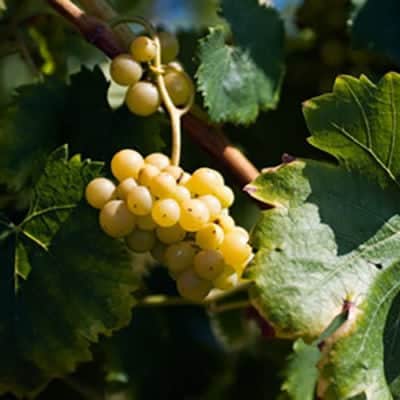
Chardonnay
REGIONS
The world’s second most grown white grape is popular in Hungary as well. It is mostly grown in the northern Etyek–Buda wine region – partially for producing méthode traditionelle sparkling wine by Törley and other producers –, and also typical in Eger region, which is often referred to as the ‘Hungarian Burgundy’.
CHARACTER
The well known fruity chardonnay (apple, pear, citrus flavours, tropical fruits) has beautiful examples in Hungary, both barrel aged and in reductive style.
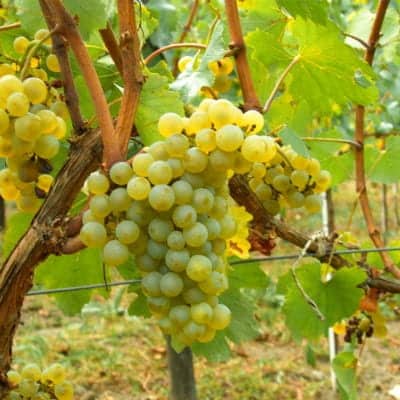
Cserszegi Fűszeres
REGIONS
The indigenous Hungarian grape can be found all over the country except Tokaj, and very popular among wine drinkers. Kunság, Hajós–Baja – the two less appreciated wine regions produce a lot of the grape, but we can find nice examples around lake Balaton as well.
CHARACTER
Aromatic spicy, muscat type grape with fairly high acidity. Not suitable for longer aging. The educated wine connoisseurs often despise the variety saying that it is not sophisticated, but it can be elegant, sleek and charming if made carefully.
STORY
The variety was created by Károly Bakonyi, who crossed Irsai Oliver and Red Traminer. The word ‘cserszegi’ refers to the village on the north-west of Lake Balaton, where Károly Bakonyi lived. ‘Fűszeres’ means spicy, it refers to the spicy character of the grape.

Ezerjó
REGIONS
It is almost totally restricted to one wine region, named Mór. The small region is proud of the grape and its winemakers produce more and more remarkable wines from this lesser known and lesser respected grape.
CHARACTER
Pale, greenish colour. Restrained on the nose, slightly aromatic. Light body, easy drinking, juicy with high acidity.
STORY
Literally Ezerjó means ‘Thousand Good’, and it used to be one of the most common varieties in Hungary, well known throughout the Carpathian Basin.

Furmint
REGIONS
It is believed to be or hoped to be the flagship of Hungary. Furmint is one of the few grapes allowed to use under the appellation of Tokaj, it is the main grape of aszú wines along with Hárslevelű. Tokaj winemakers answered with stunning dry Furmint wines to the decrease of sweet wine consumption. Furmint is grown all over Hungary, marvellous Furmint wines are made in Somló, Badacsony, Balatonfüred–Csopak, Mátra and Eger. Nowadays there is a dispute whether Furmint has a potential of long aging or does not.
CHARACTER
It ripens late and has a nose of fresh fruits, often compared to ripe pear. Its significant acidity and alcohol produce characterful wines sometimes with a touch of tartness.
STORY
Furmint originates from Tokaj, and there are several evidences to prove that, one of them is the mention of the variety as early as 1611 in a document from Erdőbénye, Tokaj region.
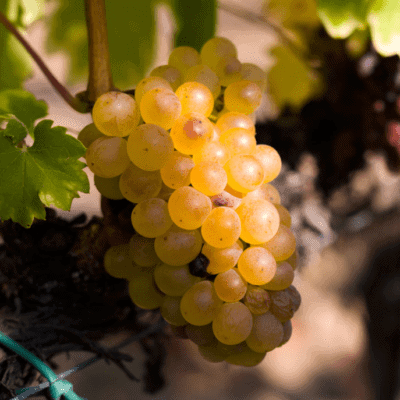
Generosa
REGIONS
Because of its great characteristics: its resistance to diseases and severe weather conditions, plus its lovely flavours its popularity keeps increasing. At the moment (written in 2017) Hungary has 400 hectares planted with Generosa. Wine regions: Kunság, Hajós–Baja and Mór.
CHARACTER
Generosa resist winter, its buds survive severe frost. It has relatively high yield, and resistant to rot and powdery mildew. Its wine has aromas of that of the flower of the vine, juicy, grapey with vivid, crispy acidity. Frittmann Generosa is a great example.
STORY
The Portugese Generosa is a cross between Fernao Pires and Sultana Moscata, and planted in less than 1 hectare. The Hungarian Generosa is a cross as well, but between Ezerjó (important in Mór and Kunság wine regions) and Piros Tramini (Savagnin Rose). This pink-berried cross was obtained in 1951 by Bíró Károly in Hungary, tested since 1976 by Edit Hajdú at the Kecskemét viticulture research centre, and finally christened Generosa in 2004.

Hárslevelű
REGIONS
Hárslevelű is the other main grape variety in Tokaj besides Furmint, however it is widely planted all over the country, it can be found even in the southern Villány. Late to ripen, like Furmint, but with looser bunches. It has a thicker grape skin meaning that in dry vintages the botrytis attack it more slowly.
CHARACTER
Its wine is more aromatic than Furmint with delicate linden honey aromas, sometimes elderflower. Elegant, subtle wine can be made from Hárslevelű with refined acidity, creamy texture and a touch of spices.
STORY
Its name is literally ‘linden leaf’ and comes from the shape of the leaf which resembles that of the tree. According to some recent DNA researches Furmint is the parent of Hárslevelű.

Irsai Olivér
REGIONS
Planted widely in Hungary due to its popularity. Wonderful examples of the grape are produced in Kunság region, where the best winemakers can hold in check the aromatic character of the variety. Also popular in Mátra, Balaton, Etyek–Buda, Neszmély, Sopron.
CHARACTER
Ripening early, it gives a very aromatic, intense wine with grapey aromas, delicate spices. Easy drinking wine with medium-low acidity and alcohol, almost always vinified reductively for instant consumption.
STORY
Irsai Olivér is a crossing between Pozsonyi Fehér and Csabagyöngye created by Pál Kocsis in 1930. There are several legends of the naming of the grape, one says that Kocsis was a passionate gambler and he gave away the name of the crossing due to his massive debt, but the truth is likely to be much simpler: Irsai Olivér was of the son of a respected wine merchant friend of Kocsis. The grandson of Irsi Olivér is a university student now in Szeged.

Juhfark
REGIONS
Juhfark is grown almost exclusively in the small volcanic hill of Somló, a small amount in Balatonfüred.
CHARACTER
Rather neutral, restrained nose with some flowers and green apples. High, sometimes brutal acidity. It is really difficult to tame this variety, but there are amazing examples of it in history! If you are not afraid of straightforward acidity, take a chance on it. In Somló, the minerality paired with high acidity results some outstanding wines with great aging potential.
STORY
Juhfark takes its name from the sheep’s tail, as the long cylindrical shape of the bunches resemble the sheep’s tail. It is often cited as the ‘wines of the wedding-night’, since it was believed to help when a couple had been longing for a son.

Kabar
REGIONS
Exclusively grown in Tokaj, in fact it is an experimental strain previously known as Tarcal 10 that is a cross between Hárslevelű and Bouvier. It ripens at a similar time to Zéta, but produces lower yields. Kabar has a good tendency to accumulate sugar, botrytises well to become an aszú grape, but because of its thicker skin the aszú berries are less vulnerable to rainy periods.
CHARACTER
Kabar gives wines with some linden blossom on the nose and high acidity on the palate.
STORY
Kabar is a new variety (the crossing was made in 1967 in Tarcal research centre) allowed in the Tokaj wine region since 2006. Kabar represents only 1 percentage of Tokaj plantations.
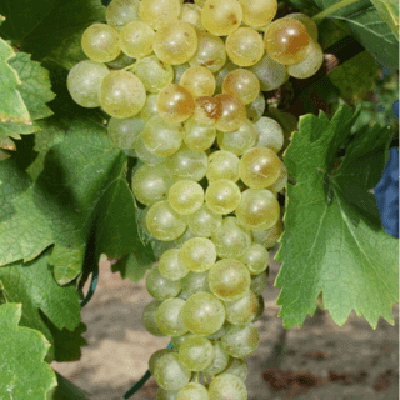
Kéknyelű
REGIONS
This grape is exclusively grown in Badacsony wine region. Planting alternate rows with a variety such as Budai Zöld encourages more consistent pollination.
CHARACTER
In good vintages it gives elegant wine with creamy structure and subtle, fine acidity. Rare grape variety that is capable of giving exceptionally high quality wines.
STORY
Kéknyelű is quite likely of Hungarian origin. Very popular among the winemakers, though it is hard to cultivate. It ripens relatively late, therefore it needs protection from the hungry games living in the forests of Badacsony and Szent György mountain. “Kéknyelű, meaning ‘blue stalk’ and referring to the slightly blue tint of the petiole, is an old variety probably originating from the Badacsony region in western Hungary. The alleged synonymy between Kéknyelű and the Italian Picolit mentioned in the Vitis International Variety Catalogue has been disproved by DNA profiling.” Excerpt From: Robinson, Jancis; Harding, Julia; Vouillamoz, Jose. “Wine Grapes (9780062325518).” iBooks.
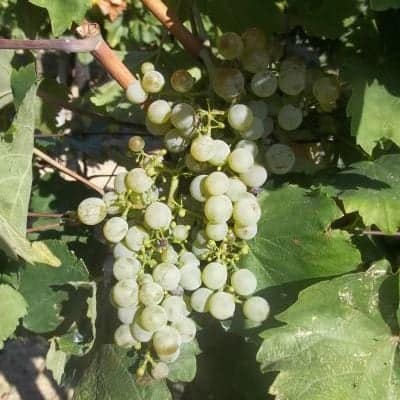
Királyleányka
REGIONS
The grape is originally from Tranyslvania, the formerly Hungarian western part of Romania. Now it is often referred to as Hungarian indigenous grape variety. It is grown all over Hungary, typically in Mátra, Ászár–Neszmély, Eger, Mór, Pannonhalma, South Balaton and Pécs wine regions. It’s often used in blends, for exapmle in the popular white blend of Eger wine regon, Egri Csillag.
CHARACTER
The wine made of Királyleányka has light yellow colour with greenish taint. It is slightly aromatic, delicate. It has a significant, but pleasant acidity. Its fresh acidity makes it a good blending partner for other, softer aromatic varieties. On the nose and palate it is full of fresh fruits and flowers. The lightly perfumed, grapey, light wine is a popular summer party wine nowadays.
STORY
The world Királyleányka literally means little princess. Királyleányka is said to be a natural hybrid of Leányka and Kövérszőlő – this latest is one of the typical grapes of Tokaj wine region. The grape was introduced in Hungary in the 1970s. It was said to be identical with Fetească Regală, however comparison of their DNA profiles shows that Királyleányka and Fetească Regală from Romania are distinct varieties (Wine Grapes).
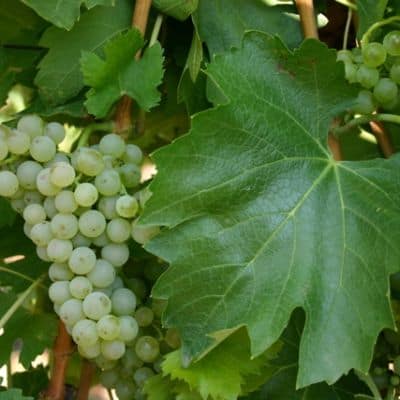
Korai Piros Veltelini (Frühroter Veltliner)
REGIONS
In Austria 605 ha, in Slovakia 363, in Czech Republic 251 ha, in France only 5 ha, in Italy a few, in Germany only 4 hectares and in Hungary also only a few hectares are grown – and it is restricted to Sopron wine region. In Sopron Kurt Taschner cultivates Frühroter Veltliner vineyard and makes light, juice wine with flowery, peachy and tropical fruit notes.
CHARACTER
“Early budding and early ripening, as its name suggests, susceptible to downy and powdery mildews and to botrytis bunch rot. Vigorous and best pruned long. Small bunches and berries.”
Excerpt From: Robinson, Jancis; Harding, Julia; Vouillamoz, Jose. “Wine Grapes (9780062325518).” iBooks.
Taschner Korai Piros Veltelini boasts flowers and peach on the nose, tropical fruits and spiciness on the palate. Mango and citrus fruits. Light, juicy wine ideal with turkey dishes.
STORY
A natural cross between Roter Veltliner and Silvaner. Roter Veltliner’s origin has not been uncovered yet, but it is confirmed that surprisingly enough it is not related to Grüner Veltliner.
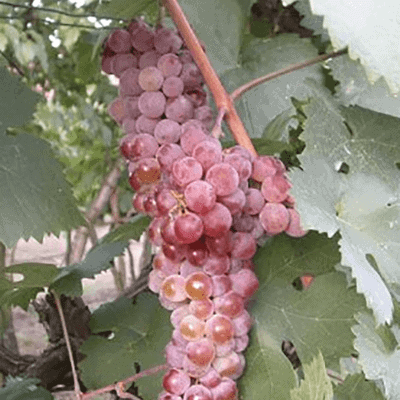
Leányka
REGIONS
Leányka is a Hungarian grape variety, restricted only to our country. It is less popular than it once was therefore the amount of plantations is decreasing: there were 880 ha in 2008, while in 2022 there were only 520, mostly in Eger. The neighbouring wine regions are also worth mentioning: Mátra and Bükk in north-eastern Hungary. There are minor plantings in Mór and Neszmély on the west and in Kunság, on the south.
CHARACTER
Lányka gives moderate acidity, slightly aromatic, easy drinking wines. It has the potential to give lovely natural sweet wines as well. With low yield it can give concentrated, floral wines with silky, creamy texture. Some experts compare it to Viognier variety.
STORY
The name ‘leányka’ means ‘little girl’, and the variety is quite likely to originate from Transylvania (Romania). Despite of the similar meaning, the Romanian Feteasca Alba (meaning ‘white girl’) is not the same variety. Leányka is possibly one of the parents of Királyleányka grape variety. Zefír is Hungarian crossing between Leányka and Hárslevelű.

Muscat Ottonel / Ottonel Muskotály
REGIONS
In Hungary it is planted almost all over the country (except from Somló and Sopron), but mostly in Mátra, Eger, Kunság, Balaton.
CHARACTER
Wines of Muscat Ottonel are meant for early consumption. When young, it is fresh, aromatic with notes and flavours of the ripened grape berry and rose petals. Most Muscat Ottonel wines are not very complex, the acidity is medium or rather low, but pleasant on the nose and easy to drink.
STORY
Muscat Ottonel is a seedling obtained in Angers in the Val de Loire, France, by the vine breeder Jean-Pierre Vibert in 1839, and later released in 1852 by his chief gardener, Robert. It was named in honour of a certain H Ottonel. Vibert did not keep track of the parents, and the seedling was thought to be a CHASSELAS × Muscat de Saumur cross (Galet 2000) until DNA profiling at INRA (Institut National de la Recherche Agronomique) in Montpellier, southern France, corrected this to a Chasselas × Muscat d’Eisenstadt cross. ”Excerpt From: Robinson, Jancis; Harding, Julia; Vouillamoz, Jose. “Wine Grapes (9780062325518).” iBooks.
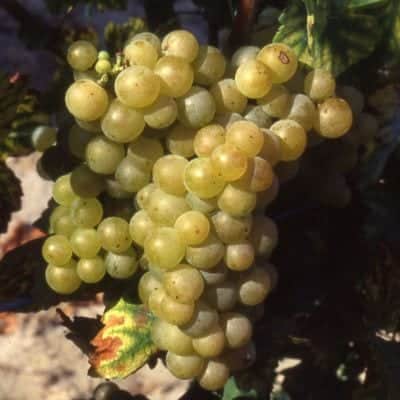
Olaszrizling (Welschriesling)
REGIONS
It is grown all over Hungary, in fact the most widely planted grape in the country, and popular in the whole Carpathian basin.
CHARACTER
It ripens rather late, in good vintages even shrivels. When young, there are flowers on the nose, on the palate full of flavours and there is a little bitter almond note in its aftertaste. It has a pleasant, refreshing acidity. Olaszrizling is capable of long barrel aging.
STORY
It was and is mistaken for Rhine Riesling, though it is a completely different grape. Its synonyms include the most common Welschriesling (Austria, Germany), Graševina in Croatia, Laški Rizling in Slovenia. It is quite likely to originate from the Danube basin, though there are numerous other hypotheses. Though it is the most widely planted grape of Hungary, it did not have a good reputation for a long time and while nowadays wonderful examples are easy to find in Hungary both in fresh and aged style.

Rózsakő
REGIONS
This grape is exclusively grown in Badacsony wine region.
CHARACTER
The skin is rather thick therefore less sensitive than Kéknyelű, and more productive. It resembles Kéknyelű in its characteristics and can also give high quality wines.
STORY
A cross between Kéknyelű and Budai Zöld develoved by Dr. Ferenc Király in Badacsony in 1957 – a most logical decision to cross these two grapes, since they are often planted adjacent to each other to improve pollination. The name literally means ‘Rose Stone’ and given after Róza Szegedi, a beautiful and intelligent woman who is known as the eternal love of the Hungarian poet Sándor Kisfaludy. The poet and Róza used to sit on a heart shaped basalt rock on Badacsony mountain enjoying the spectacular view of Lake Balaton. The stone is named after Róza, the grape is named after the stone.

Rizlingszilváni
REGIONS
Apart from Hungary, it is widely planted mostly in Germany and New Zealand, though the overall quantity of this grape is less and less. It used to be the most widely planted grape in the United Kingdom before sparkling wine became so immensely popular. Even found in Japan. In Hungary Mátra, Eger, Kunság and Balaton are the main vineyards.
CHARACTER
It ripens early, gives high yield, but due to its thin skin it is rather sensitive. It gives slightly aromatic, fresh and light wine with subtle acidity to be consumed young.
STORY
Riesling Sylvaner or Müller Thurgau are much more widely used synonyms. “A RIESLING × Madeleine Royale cross developed in 1882 by Swiss vine breeder Hermann Müller (born in the canton of Thurgau, hence the name), who was working at the Geisenheim research centre in the Rheingau, Germany, at the time. This variety was originally recorded as a RIESLING × SILVANER cross by its breeder, Hermann Müller, which explains the erroneous synonyms Riesling × Silvaner and Rivaner still in use today. It was later named Müller-Thurgau by a German grape expert in honour of the breeder. ”Excerpt From: Robinson, Jancis; Harding, Julia; Vouillamoz, Jose. “Wine Grapes (9780062325518).” iBooks.
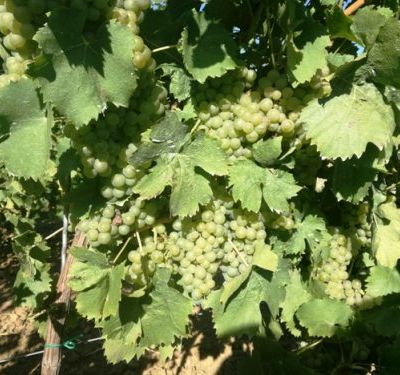
Sauvignon Blanc
REGIONS
“Sauvignon the wine is typically high in acidity with a range of aromas generally associated with things green – grass, leaves, nettles and gooseberries – provided the grapes are picked early enough. ‘Cat’s pee on a gooseberry bush’ became a popular description of the aroma of some early-picked Sauvignon in the late twentieth century. The wine produced by overripe grapes, on the other hand, can be relatively dull.” Excerpt: Robinson, Harding, Vouillamoz, “Wine Grapes
CHARACTER
It’s one of the most planted grape around the world, the third most planted white grape in France. In Hungary almost 1000 hectares are grown all over the country except from Somló (even in Tokaj region, though it is not official there.) The most plantations are in Mátra region, the second is Eger region, then the third is Etyek–Buda wine region with its limestone – the best for Sauvignon Blanc.
STORY
Instead of the common belief that Sauvignon Blanc comes from Bordeaux, it is more likely to have originated from the Val de Loire in France. However surprising it is, Sauvignon Blanc spontaneously crossed with Cabernet Franc in Bordeaux and produced Cabernet Sauvignon – which is so the half blood child of a white and a red top grape variety. In Hungary Sauvignon Blanc has been an official grape since only 1982.
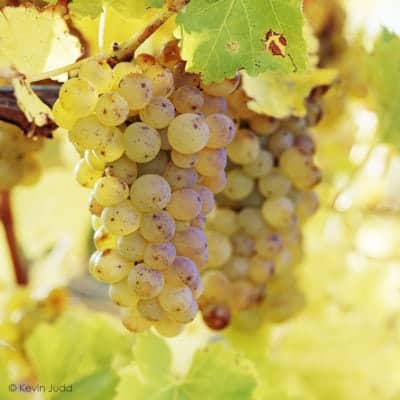
Szürkebarát
REGIONS
Szürkebarát is grown on more than 1500 hectares in Hungary, mostly in Mátra wine region and around lake Balaton – ont he north of Balaton there are beautiful wines made of Szürkebarát grown on volcanic soil.
CHARACTER
Just like all over the world, also in Hungary you will find pinkish and white wines made of the variety. Since the berry has a pink colour, longer maceration can resulte a pale pink wine. It is worth reducing yield, because it can give full bodied, aromatic, rich wines. The acidity is medium or even lower. It likes volcanic soil and tends to be rich, oily with a nose like perfume. It often has some residual sugar.
STORY
„Legend has it that in 1375 the emperor Charles IV brought Pinot Gris from France to Hungary, where Cistercian monks planted it on the Badacsony hills near Lake Balaton. This early introduction supposedly explains why Pinot Gris in Hungary is called Szürkebarát, meaning ‘grey monk’. In 1568, the theory continues, Pinot Gris was brought back from Hungary to Kientzheim in the French region of Alsace by Lazarus von Schwendi (Graff-Höfgen 2007), a general who took possession of the Hungarian city of Tokay in the reign of Charles-Quint and who owned a castle in Kientzheim, north west of Colmar. This also supposedly explains why Pinot Gris is called Tokay in Alsace, a synonym first cited in 1750 in a manuscript at Domaine Weinbach in Alsace (Krämer 2006). However, there is no historical evidence to document these hypotheses, and it is more likely that Pinot Gris, often used to make sweet wines in Alsace, was intentionally given the name Tokay to benefit from the fame already achieved throughout Europe by the Tokaji wines from Hungary, which were and still are mainly made from Furmint and Hárslevelű, two local varieties that are unrelated to Pinot Gris. Excerpt From: Robinson, Jancis; Harding, Julia; Vouillamoz, Jose. “Wine Grapes (9780062325518).” iBooks.
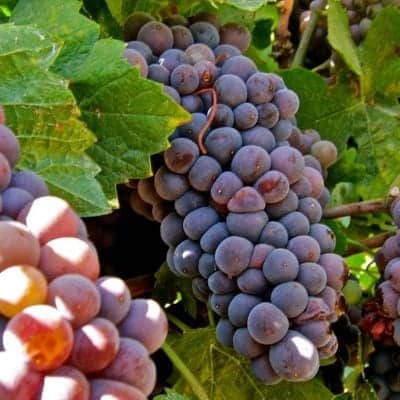
Vulcanus
REGIONS
This grape is exclusively grown in Badacsony wine region.
CHARACTER
It retains the complexitiy and richness of Szürkebarát which pairs with the fine acidity of Budai Zöld. Fairly resistant to diseases and able to transfer the terroir characteristics of Badacsony.
STORY
It is a cross between Szürkebarát (Pinot Grigio) and Budai Zöld develoved by Dr. Ferenc Király in Badacsony in 1957. The name refers to the volcanic origin of the mountains of Badacsony wine region.
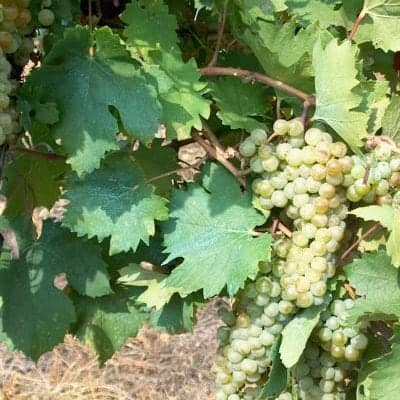
Zeusz
REGIONS
The grape is grown mostly in Badacsony wine region, Szeremley Winery made probably the most well known Zeus in 2002, a late harvest, amazing, complex dessert wine. Endre Szászi, an organic producer on Szent György mountain, Badacsony wine region also makes remarkable wines of Zeus. A small amount is grown in Somló region. In 2008 there were only 14 hectares of Zeus in Hungary.
CHARACTER
Zeus has quite high yields, and it gives a white wine with relatively high acidity – thanks to one of the parents, the Ezerjó. If harvested late, amazing dessert wines can be made of Zeus. Moderately susceptible to botrytis bunch rot and some tolerance of cold winter temperatures.
STORY
It is crossing between Ezerjó and Bouvier, introduced by Ferenc Király at the University of Pécs, Hungary in 1951. Its other name is Badacsony 10 (Zengő, another crossing made by him is called Badacsony 8, and Zenit is also a Ferenc Király crossing, so he seem to like the letter Z…)
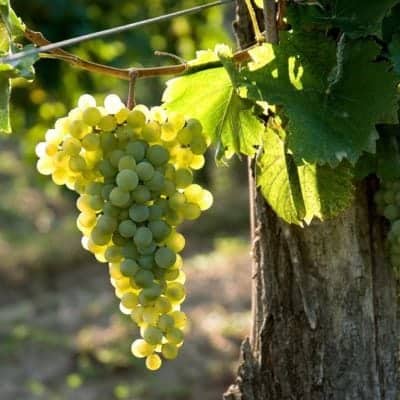
Tramini
REGIONS
In Hungary it is grown in several wine regions, mostly in Pannonhalma, Mór, Mátra and Eger.
CHARACTER
Early budding and ripening. Generally pruned long. Small, sometimes very small, bunches and berries. Thick skins give it good resistance to fungal diseases, especially to botrytis bunch rot. Berries can achieve high sugar concentration while retaining good levels of acidity. (Excerpt From: Robinson, Jancis; Harding, Julia; Vouillamoz, Jose: Wine Grapes) Its nose is reminiscent of rose petals, orange blossom, lemon zest with some spicy notes. Grapey aromas similar to that of Muscat, relatively high alcohol, many times moderate acidity.
STORY
Traminer is a grape variety with quite obscure origin: it might have originated in France, Germany (from the town of Tramin) but there are other hypotheses as well. In France it is known as Savagnin Blanc (not to confuse with Sauvignon Blanc), in Bulgaria it has the funny name of Mala Dinka, while in Hungary it called Tramini. Gewürztraminer is a close relative, but they are not identical.
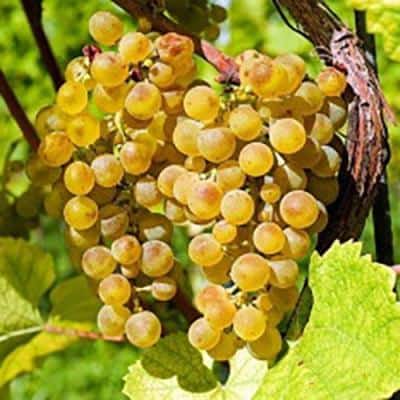
Zenit
REGIONS
Although Zenit is widely dispersed around Hungary, particularly in higher sites in Mátra, Eger and around Lake Balaton, the total area in 2008 was just 560 hectares. (Excerpt From: Robinson, Jancis; Harding, Julia; Vouillamoz, Jose. “Wine Grapes”)
CHARACTER
Wines are crisp with flavours of apple and citrus but not overly aromatic; the best examples are potentially long-lived and subtle with a mineral edge. (Excerpt From: Robinson, Jancis; Harding, Julia; Vouillamoz, Jose. “Wine Grapes”)
STORY
Zenit is a crossing between Bouvier and Ezerjó grapes created in Pécs Research centre in Hungary by Ferenc Király in 1951, but it was officially recognized only in 1976. Thanks to its good abilities Zenit is getting more and more popular. In Bükk wine region some young pioneer winemakers take Zenit very seriously.
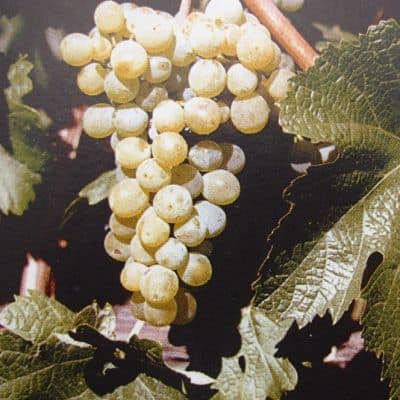
Cabernet Franc
REGIONS
The well known Bordeaux variety can be found almost all over Hungary, but Villány should definitely be mentioned when speaking about franc. “Cabernet Franc has found its natural home in Villány” – said Michael Broadbent renowned British wine expert, and the wine region does his best to make the grape feel comfortable there. An annual Franc conference is held with tasting event, and Villány created the appellation Villányi Franc which is a seriously controlled premium brand. There are more then 1200 hectares planted with Cabernet Franc in Hungary (in France 37 000 hectars are planted with Franc).
CHARACTER
Genetically the father of Cabernet Sauvignon, but softer, lighter, crispier. When fully ripened, it can develop very elegant, deep fruity aromas. In Hungary it is almost always aged in barrel, usually in new barrique to make a complex, concentrated wine with long finish and considerable ageing potential.

Cabernet Sauvignon
REGIONS
The king of Bordeaux – and the world’s most planted black grape – is grown all over Hungary, even if it does not ripen fully in some northern regions.
CHARACTER
Dark colour, intense nose with black currant, blueberry and when barrel aged it develops toasty, nutty notes. High in acidity and alcohol, and this latter one is an issue nowadays since high alcohol is often despised. Winemakers try to balance between ripeness and high alcohol with more or less success.

Kadarka
REGIONS
Kadarka is grown almost all over the country. It has significant vineyards in the Great Hungarian Plain, where Kunság, Csongrád and Hajós–Baja wine regions are situated. Kadarka is most important in Szekszárd and Eger, the two wine regions where the famous blend, Bikavér (Bull’s Blood) is made, and Kadarka is usually one component of the blend. Total plantings of Kadarka account for less than 700 hectares.
CHARACTER
It is really hard to cultivate Kadarka. Late ripening, sensitive, its thin skin can be affected with harmful and noble rot. The colour is medium deep ruby. On the nose rich, spicy and elegant – if in good hands. On the palate juicy, spicy, medium bodied with good acidity and low tannins. Usually consumed young, within 1–3 years, but with properly restricted yield and careful vinification Kadarka can be aged for a long time – as it is proved by some vertical tastings carried on in Szekszárd and other wine regions.
STORY
“Kadarka is said to have been introduced to Hungary from the Balkans, either by Serbians, which fits with Kadarka being the Slavic name for Scutari, a lake (also known as Skadar) between Montenegro and Albania, and with the fact that the variety was once cultivated under the synonym Skadarka in Croatia and Serbia (Levadoux 1956; Galet 2000; Rohály et al. 2003), or by Turks, hence its synonym Törökszőlő (‘Turkish grape’). It is conceivable that it made its way to Hungary via Bulgaria, where it is still widely planted under the synonym Gamza, and where it is considered to be indigenous. It is also said to be “be indigenous to the region of Miniş near Arad in western Romania, where the first sweet Aszú-style red wine was made from shrivelled Cadarcă grapes in 1744 (Dejeu 2004). The exact origin of Kadarka remains unknown but it lies somewhere within the Balkan-Pannonian area.” Excerpt From: Robinson, Jancis; Harding, Julia; Vouillamoz, Jose. “Wine Grapes (9780062325518).” iBooks.

Kékfrankos/Blaufränkisch
REGIONS
Hungary has over 8000 hectares of Kékfrankos, which makes it the most widely planted black grape of Hungary. In Austria Blaufränkisch is the second behind Zweigelt with 2640 hectares. Germany has a little bit more than 1700 hectares (and known as Lemberger or Limberger). Kékfrankos is grown in most of the Hungarian wine regions, it is probably the most famous in Sopron region (neighbouring Austria), and in the two Bikavér Bull’s Blood) producing regions: Eger and Szekszárd. In Villány Kékfrankos is also cultivated with great care and believed to have potential. South Balaton, Kunság and Hajós–Baja also produces significant amount and quality.
CHARACTER
Dark-skinned, dark-fruited Austro-Hungarian variety. Vigorous, early budding and late ripening, thus needing a relatively warm climate. It is susceptible to downy and powdery mildews. Its wine is ritch in fruits and acidity. Kékfrankos can give elegant wines with long ageing potential.
STORY
“From the Middle Ages onwards, the name Fränkisch was given to several high-quality varieties, indicating their superiority over the inferior Heunisch varieties. One of these high-quality varieties might have been Blaufränkisch, whose name did not appear until 1862 at a grape-variety exhibition in Wien (Vienna; Aeberhard 2005) and was officially adopted by the international ampelographic commission in Colmar, France, in 1875. It was later mentioned in Germany under the synonyms Lemberger (1877) and Limberger (end of the nineteenth century), both deriving from the Austrian locations from which the variety was exported to Germany: Lemberg in the Steiermark (Styria) and Limburg in Maissau (Niederösterreich/Lower Austria). In Hungary, the variety was first mentioned in 1890 under the name Kékfrankos, the literal translation of Blaufränkisch.”
Excerpt From: Robinson, Jancis; Harding, Julia; Vouillamoz, Jose. “Wine Grapes (9780062325518).” iBooks.
Sopron wine region has more than 1100 hectares of Kékfrankos, and this is the largest Kékfrankos plantation in the world. Sopron, this west Hungarian city is also known as the Capital of Kékfrankos, and it even has its own currency named after Kékfrankos!
Read the whole story of Sopron Kékfrankos currency and the legend of Kékfrankos

Portugieser
REGIONS
In Hungary this grape variety is restricted to Villány wine region, rarely made elsewhere, if it is, in Eger and Kunság. Portugieser is grown in other countries in Central Europe: in Germany (more than 4000 hectars), in Austria (more than 2000 hectars), in Hungary (more than 1000 hectars, Croatia, Czech Republic, Slovakia, Portugal, France.
CHARACTER
This productive grape ripens early and gives ruby red, fruity, velvety, easy to drink wines with sufficient acidity. Portugieser is to be consumed when fresh and young, it cannot be kept for long time.
STORY
The grape variety is likely to be of Austrian origin, and despite the name it is not likely to derive from Portugal. In Hungary Kékoportó was the common name, but due to European Union regulations this name cannot be used any more, because it would refer to (mistakenly) the city and wine region of Port (Oporto) in Portugal.
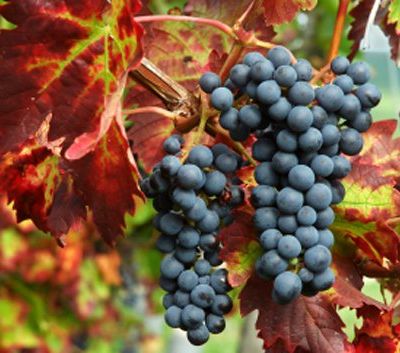
Zweigelt
REGIONS
It is the most widely planted black grape of Hungary’s western neighbour, Austria with more than 6500 hectares. The second largest Zweigelt growing country is Hungary with more than 2400 hectares. Zweigelt is also grown in the Czech Republic and Slovakia, and – strange enough – in Canada, Belgium, Poland and even in Japan (with more than 200 hectares!). In Hungary Zweigelt is certainly the most planted in Sopron wine region, bordered with Austria, but it is also found in Villány, Szekszárd, Eger, Mátra, even in the lesser known Csongrád wine region.
CHARACTER
Early or mid ripening variety with high yield, therefore careful canopy management and bunch thinning are needed to create high quality wines. Deep colour with purple shade, high acidity, medium body and fruity character. Usually it does not have long ageing potential, though there are some exceptions – especially in some Austrian wine regions, where yields are kept low and more full bodied exemples are found. In Hungary Zweigelt is mainly vinified into fruity, easy drinking wines for every day consumption.
STORY
It is a truly Austrian grape variety crossed in 1922 by Fritz Zweigelt in Klosterneobourg, Austria. It was not him who gave the name to the variety made by crossing Blaufrankisch and Saint-Laurent, he called the new grape Rotburger. The name was given later, in honour of the breeder. Fritz Zweigelt was a member of the Nazi party in Austria, and in 2018 a group of Austrian artists launched a campaign for the Zweigelt grape variety to have its name changed from that of the Nazi party member who created it.




